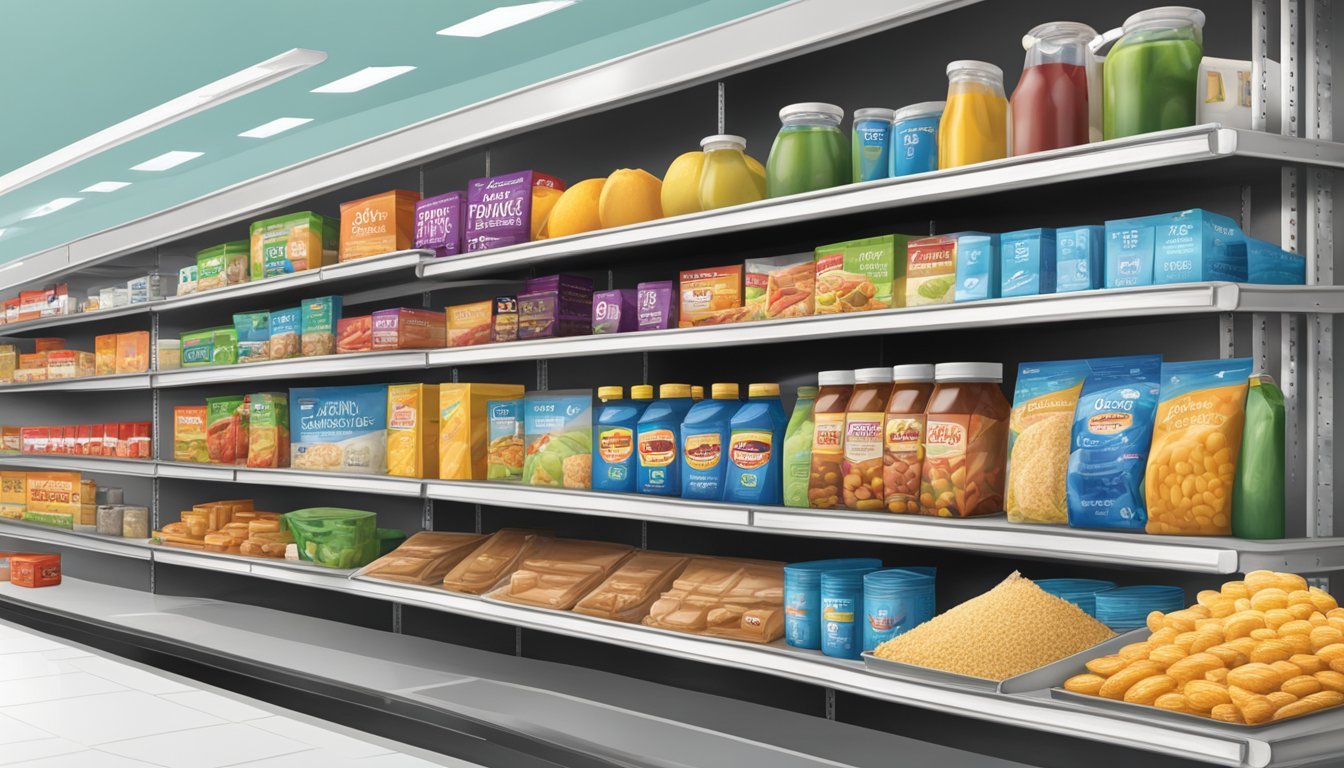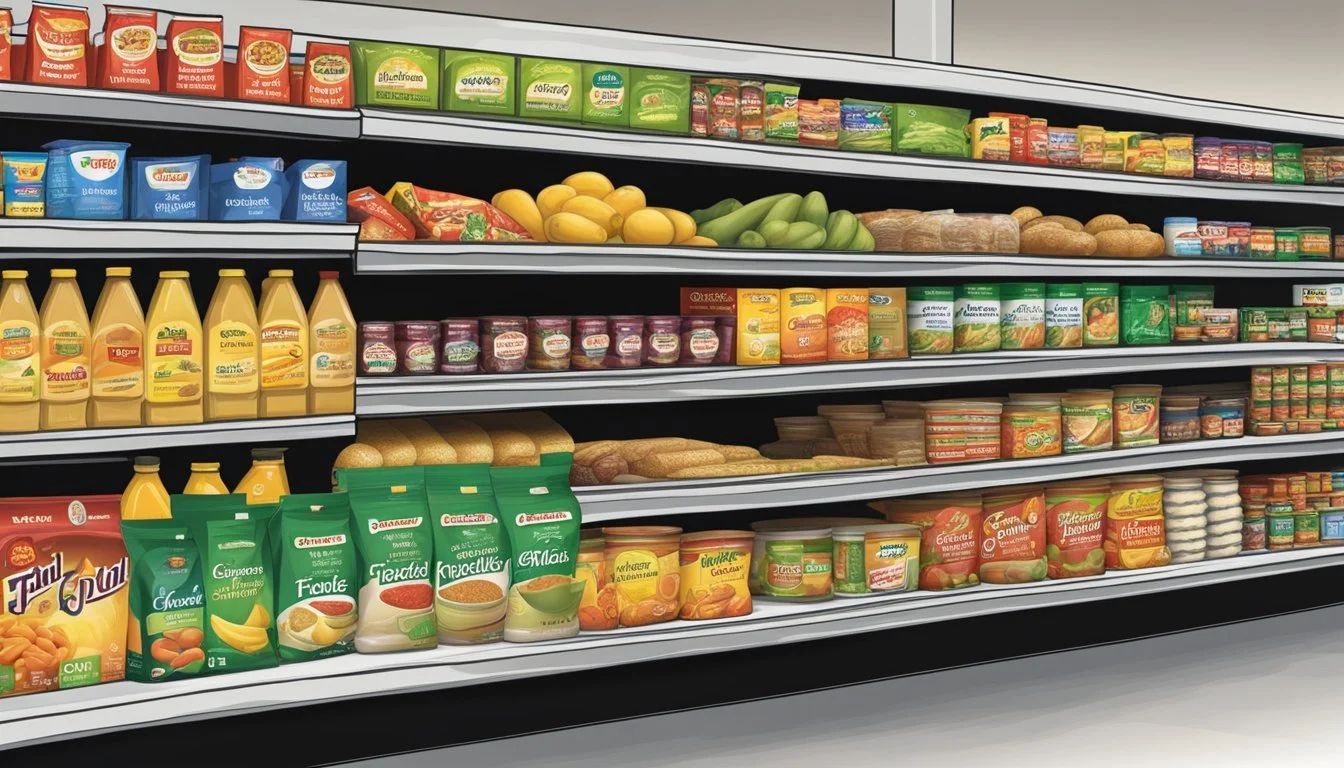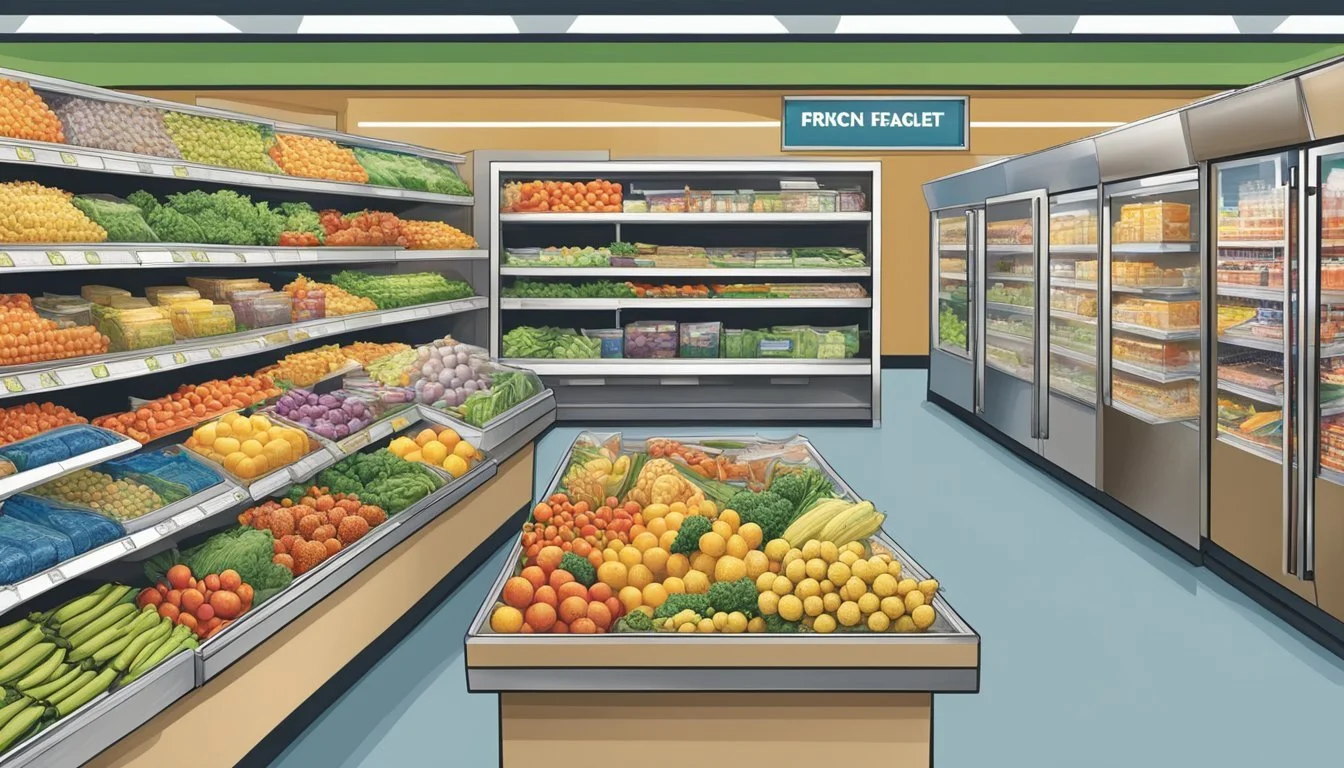Is Foodmaxx Cheaper Than Giant Eagle?
A price comparison of two popular grocery chains
FoodMaxx and Giant Eagle are two popular grocery store chains that many shoppers turn to for their weekly needs. While both offer a range of products, their pricing strategies differ significantly. FoodMaxx typically offers lower prices than Giant Eagle on most grocery items.
FoodMaxx is known for its no-frills approach and focus on providing budget-friendly options to customers. The store often features discounted products and a straightforward shopping experience. Giant Eagle, on the other hand, tends to emphasize a wider selection and additional services, which can result in higher overall prices.
When comparing specific items, shoppers may find that FoodMaxx consistently offers better deals on staples like produce, meat, and pantry goods. This price difference can lead to substantial savings for families who do their regular grocery shopping at FoodMaxx rather than Giant Eagle. However, individual preferences for store atmosphere, product variety, and location convenience may also play a role in choosing between these two supermarkets.
Understanding Grocery Pricing Strategies
Grocery stores employ various pricing tactics to attract customers and maximize profits. These strategies balance competitive pricing with promotional offers to influence shopping behavior.
Role of Supermarket Chains
Supermarket chains like Giant Eagle and FoodMaxx carefully analyze market data to set their prices. They consider factors such as local competition, operating costs, and consumer demographics.
Large chains often leverage their buying power to negotiate better deals with suppliers. This allows them to offer lower everyday prices on certain items.
Some stores focus on an "everyday low price" strategy. Others maintain higher regular prices but run frequent sales and promotions.
Sales and Promotions
Sales and promotions are key tools grocery stores use to drive traffic and boost sales. Weekly circulars highlight temporary price reductions on select items.
Loyalty programs offer personalized discounts to regular customers. These deals incentivize repeat visits and larger purchase volumes.
"Loss leaders" are products priced at or below cost to attract shoppers. Stores make up for these losses through sales of other higher-margin items.
Seasonal promotions coincide with holidays or events. Bulk discounts encourage customers to stock up on non-perishables.
Price matching policies help stores compete without permanently lowering prices. This maintains flexibility while offering competitive deals.
Analyzing Price Points
FoodMaxx and Giant Eagle offer distinct pricing strategies for grocery shoppers. Their approaches to pricing staple items and balancing quality with cost reveal key differences between the two chains.
Comparing Staple Products
FoodMaxx typically offers lower prices on staple grocery items compared to Giant Eagle. A basket of common products like milk, bread, eggs, and rice often costs less at FoodMaxx. For example, a gallon of milk might be priced at $2.99 at FoodMaxx, while Giant Eagle sells it for $3.49.
Canned goods and frozen vegetables also tend to be more affordable at FoodMaxx. A can of tomato sauce could be $0.79 at FoodMaxx versus $0.99 at Giant Eagle.
However, Giant Eagle frequently runs sales and promotions that can bring prices closer to FoodMaxx's everyday low prices on select items.
Quality vs Cost Analysis
While FoodMaxx generally offers lower prices, Giant Eagle often provides a wider selection of premium and organic products. This can affect the overall value proposition for shoppers.
Giant Eagle's focus on quality is reflected in their fresh produce section, which may feature more variety and higher-grade fruits and vegetables. This quality difference can justify slightly higher prices for some shoppers.
FoodMaxx, on the other hand, aims to maximize savings for budget-conscious consumers. Their no-frills approach allows them to keep prices low across most product categories.
Store brands play a significant role in both chains' pricing strategies. FoodMaxx's private label items are usually priced lower than comparable products at Giant Eagle, offering substantial savings.
Market Basket Comparison
FoodMaxx and Giant Eagle offer different shopping experiences and pricing structures. A closer look at key departments reveals how these stores compare in terms of cost and selection.
Produce Section Comparison
FoodMaxx typically offers lower prices on fresh produce compared to Giant Eagle. Bananas and potatoes are often priced competitively at FoodMaxx, with savings of 10-15% on average. Giant Eagle, however, tends to have a wider variety of organic and specialty produce options.
FoodMaxx focuses on bulk pricing for fruits and vegetables, allowing customers to purchase larger quantities at discounted rates. Giant Eagle provides more pre-packaged produce options, which can be convenient but may come at a higher price point.
Quality can vary between the two stores, with Giant Eagle generally maintaining more consistent standards across its produce department.
Meat and Dairy Analysis
Giant Eagle often has a more extensive selection of meats and dairy products compared to FoodMaxx. However, FoodMaxx frequently offers lower prices on staple items like ground beef and milk.
FoodMaxx's meat department focuses on value packs and family-sized portions, which can lead to significant savings for larger households. Giant Eagle provides a broader range of cuts and specialty meats, including organic and grass-fed options.
In the dairy aisle, FoodMaxx typically offers competitive prices on basic items such as eggs and cheese. Giant Eagle's dairy section usually includes more artisanal and specialty products, albeit at higher prices.
Packaged and Dry Goods
FoodMaxx excels in providing low-cost options for packaged and dry goods. Their store-brand products are often priced 20-30% lower than comparable items at Giant Eagle.
Giant Eagle offers a wider variety of national brands and gourmet options in their dry goods aisles. This can be beneficial for shoppers seeking specific products or flavors.
FoodMaxx's selection of dry goods is more limited but focuses on essential pantry staples at budget-friendly prices. Giant Eagle's packaged food aisles tend to be more extensive, featuring a mix of everyday items and specialty products.
Frozen foods at FoodMaxx are generally priced lower than at Giant Eagle, particularly for basic items like frozen vegetables and pizza.
Discount Retailers vs Traditional Supermarkets
Discount retailers and traditional supermarkets employ different strategies to attract customers. These approaches impact pricing, product selection, and shopping experiences.
Bulk Buying and Savings
Discount chains like Aldi and Grocery Outlet focus on offering lower prices through bulk purchasing and reduced operating costs. They often stock fewer brand-name items, instead promoting their own private labels. This allows them to pass savings on to customers.
Walmart leverages its massive scale to negotiate better deals with suppliers. Their "Everyday Low Prices" strategy aims to consistently undercut traditional supermarkets. The retail giant's Walmart brand products provide budget-friendly alternatives across many categories.
Amazon's entry into grocery retail has further disrupted the market. Their acquisition of Whole Foods and launch of Amazon Fresh stores combine online convenience with competitive pricing on select items.
Membership Clubs and Benefits
Some discount retailers operate on a membership model. Costco and Sam's Club charge annual fees but offer significant discounts on bulk purchases. These clubs often feature lower prices on groceries, household goods, and even gasoline.
Traditional supermarkets have responded with their own loyalty programs. These typically offer personalized discounts, fuel points, and other perks to encourage repeat business. Some chains have introduced paid membership tiers with enhanced benefits.
Digital coupons and mobile apps have become common across both discount and traditional retailers. These tools help shoppers maximize savings and compare prices more easily between stores.
Consumer Shopping Behaviors
Consumer shopping behaviors for groceries are influenced by various factors including price, convenience, and product selection. These behaviors shape how families approach meal planning and make purchasing decisions.
Shopping Patterns and Store Choice
Many consumers compare prices across different grocery stores to find the best deals. FoodMaxx and Giant Eagle offer distinct shopping experiences, attracting different customer segments. Budget-conscious shoppers often gravitate towards stores like FoodMaxx for lower prices on staple items. Families looking for a broader selection may prefer Giant Eagle.
Store layout and product organization play a role in the shopping experience. FoodMaxx typically has a no-frills approach, while Giant Eagle may offer a more curated environment. This affects how quickly consumers can complete their shopping trips.
Loyalty programs and digital coupons influence store choice. Both chains have implemented these features to retain customers and encourage repeat visits.
Impact of Shopping Frequency
Shopping frequency affects consumer behavior and spending patterns. Families who shop weekly tend to make larger purchases and may be more likely to stock up on sale items. This approach often aligns with meal planning efforts.
Those who shop more frequently may make smaller, targeted purchases. This can lead to less food waste but may result in missed savings opportunities on bulk items.
Shopping frequency also impacts the purchase of fresh produce and perishables. Consumers visiting stores more often can buy smaller quantities of fresh items, potentially leading to healthier eating habits.
Store proximity plays a crucial role in shopping frequency. Consumers living closer to a FoodMaxx or Giant Eagle are more likely to make frequent, smaller trips rather than less frequent, larger hauls.
Online and In-Store Deals Comparison
Comparing prices between FoodMaxx and Giant Eagle requires examining both online and in-store offerings. Technology and loyalty programs play key roles in finding the best deals at each retailer.
Utilizing Technology for Savings
Price comparison apps help shoppers find the lowest prices between FoodMaxx and Giant Eagle. These apps often list current sales and digital coupons for both stores. Online shopping platforms for each retailer display up-to-date pricing and promotions.
Social media platforms like Facebook and Twitter sometimes feature exclusive deals. FoodMaxx and Giant Eagle may post flash sales or limited-time offers on their social accounts.
Many shoppers create price comparison lists using spreadsheet apps. This allows for tracking price fluctuations over time between the two stores.
Brand Loyalty and Store Apps
FoodMaxx and Giant Eagle both offer mobile apps with digital coupons and personalized deals. These apps typically provide exclusive savings not found elsewhere.
Store-branded products often cost less than national brands at both retailers. FoodMaxx's Sunny Select and Giant Eagle's Market District lines offer budget-friendly alternatives.
Loyalty programs through the store apps reward frequent shoppers with points or cash back. Giant Eagle's fuelperks+ program provides gas discounts based on grocery purchases.
Some apps allow users to load digital coupons directly to their loyalty accounts. This streamlines the checkout process and ensures shoppers don't miss out on savings.
The Influence of Regional Pricing
Regional pricing plays a significant role in determining the cost differences between FoodMaxx and Giant Eagle. Factors like local competition, distribution networks, and transportation expenses impact pricing strategies across different areas.
Geographical Price Variation
FoodMaxx and Giant Eagle operate in distinct geographical regions, leading to notable price disparities. FoodMaxx primarily serves the West Coast, while Giant Eagle focuses on the Midwest and East Coast. This regional separation results in different competitive landscapes and cost structures.
Local economic conditions influence pricing. Areas with higher costs of living may see elevated grocery prices. Market saturation also affects pricing strategies. In regions with numerous grocery options, stores may lower prices to attract customers.
Transportation and Costs
Transportation expenses significantly impact grocery prices. FoodMaxx benefits from its West Coast presence, with shorter supply chains for produce from California's agricultural regions. This proximity can lead to lower prices for fresh goods.
Giant Eagle faces higher transportation costs due to its Midwest and East Coast locations. Longer distances from major produce sources increase expenses. The chain mitigates this by operating its own truck fleet and distribution centers.
Gas prices affect both chains' distribution costs. When fuel prices rise, transportation expenses increase, potentially leading to higher grocery prices. Regional differences in gas prices further influence the cost structure of each chain.
Economic Factors Affecting Prices
Food prices fluctuate due to complex economic forces. Market trends, inflation, and consumer purchasing power play crucial roles in determining grocery costs at stores like FoodMaxx and Giant Eagle.
Supply Chain and Demand
Supply chain disruptions significantly impact food prices. Weather events, global trade issues, and unexpected crises like the COVID-19 pandemic can cause shortages and price spikes. For example, droughts may reduce crop yields, leading to higher produce costs. International conflicts, such as the Russia-Ukraine situation, can disrupt grain exports and increase prices worldwide.
Transportation costs also affect food prices. Rising fuel prices make it more expensive to ship goods, which retailers often pass on to consumers. Labor shortages in the supply chain can lead to increased wages, further driving up prices.
Market demand fluctuations influence pricing as well. When demand for certain products increases suddenly, retailers may raise prices to balance supply and demand.
Consumer Price Sensitivity
Consumers' willingness to pay affects how stores like FoodMaxx and Giant Eagle set their prices. During economic downturns, shoppers become more price-sensitive, seeking out cheaper alternatives or discount stores.
Inflation plays a significant role in consumer behavior. As the cost of living rises, consumers may prioritize essential items and cut back on premium or non-essential products. This shift can lead stores to adjust their pricing strategies to maintain sales volume.
Income levels and employment rates impact purchasing power. When wages stagnate or unemployment rises, consumers tend to be more cautious with their spending, potentially favoring lower-priced options or discount retailers.
Consumer confidence also affects buying habits. When people feel optimistic about the economy, they may be less price-sensitive, allowing retailers to maintain higher prices on certain items.
Case Studies: Shopper's Receipts
Real-world examples offer valuable insights into price differences between FoodMaxx and Giant Eagle. Comparing receipts reveals concrete savings opportunities for shoppers.
Single Item Comparisons
A gallon of milk at FoodMaxx costs $2.99, while Giant Eagle prices it at $3.49. This $0.50 difference adds up for families purchasing multiple gallons per week.
Bread shows a similar pattern. A loaf of white bread is $1.99 at FoodMaxx compared to $2.49 at Giant Eagle.
Fresh produce prices vary seasonally. In summer, a pound of strawberries costs $2.49 at FoodMaxx versus $3.29 at Giant Eagle.
Cereal prices highlight significant disparities. A family-size box of corn flakes is $3.99 at FoodMaxx, while Giant Eagle charges $4.79.
Full Basket Analysis
A family of 4 spending $200 weekly on groceries saved $23 by shopping at FoodMaxx instead of Giant Eagle. This amounts to $1,196 annual savings.
Key differences:
Produce: 15% lower at FoodMaxx
Dairy: 12% cheaper at FoodMaxx
Meat: 10% less expensive at FoodMaxx
Packaged goods: 8% lower at FoodMaxx
FoodMaxx's store brand items contributed to significant savings. Generic canned vegetables were 30% cheaper than national brands at Giant Eagle.
Price tracking over 3 months showed FoodMaxx consistently maintained lower prices on staple items. Giant Eagle's prices fluctuated more with weekly specials.
Conclusion: Maximizing Food Value
When comparing FoodMaxx and Giant Eagle, price-conscious shoppers can find significant savings at FoodMaxx. The store typically offers lower prices on many staple items, especially in the dry goods section.
FoodMaxx's cost-effective approach makes it an attractive option for budget-minded consumers. However, Giant Eagle provides a one-stop shop experience with a wider product range, which some may find more convenient.
To maximize food value, consider these strategies:
• Compare prices regularly between stores • Take advantage of sales and promotions • Buy in bulk when it makes sense financially • Use store loyalty programs and coupons • Plan meals around seasonal produce
Quality and affordability can coexist. Both FoodMaxx and Giant Eagle offer fresh produce and name-brand products, allowing shoppers to balance cost and quality according to their preferences.
Smart shoppers may benefit from splitting their grocery list between stores. This approach allows them to capitalize on the best deals from each retailer, potentially leading to greater overall savings.










